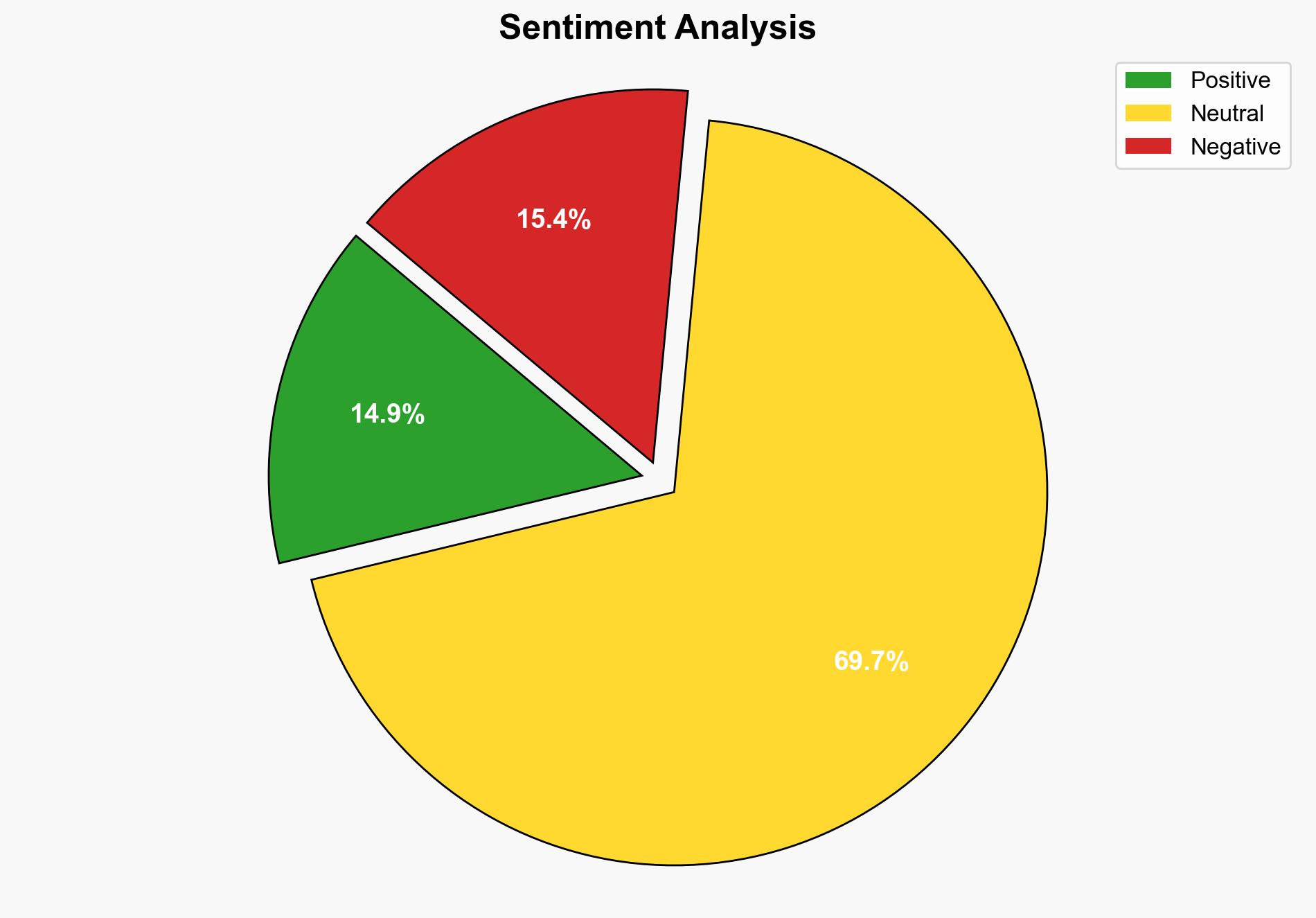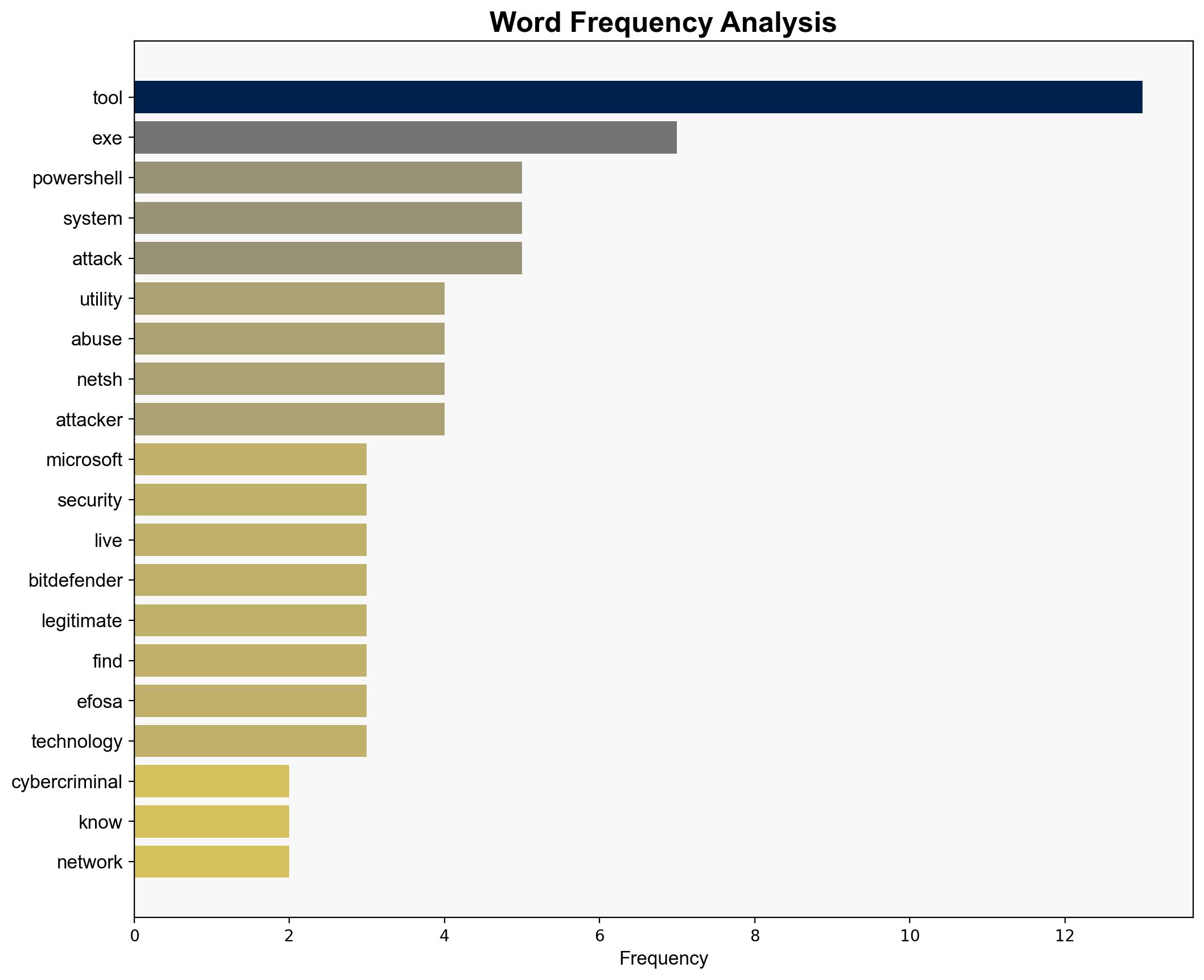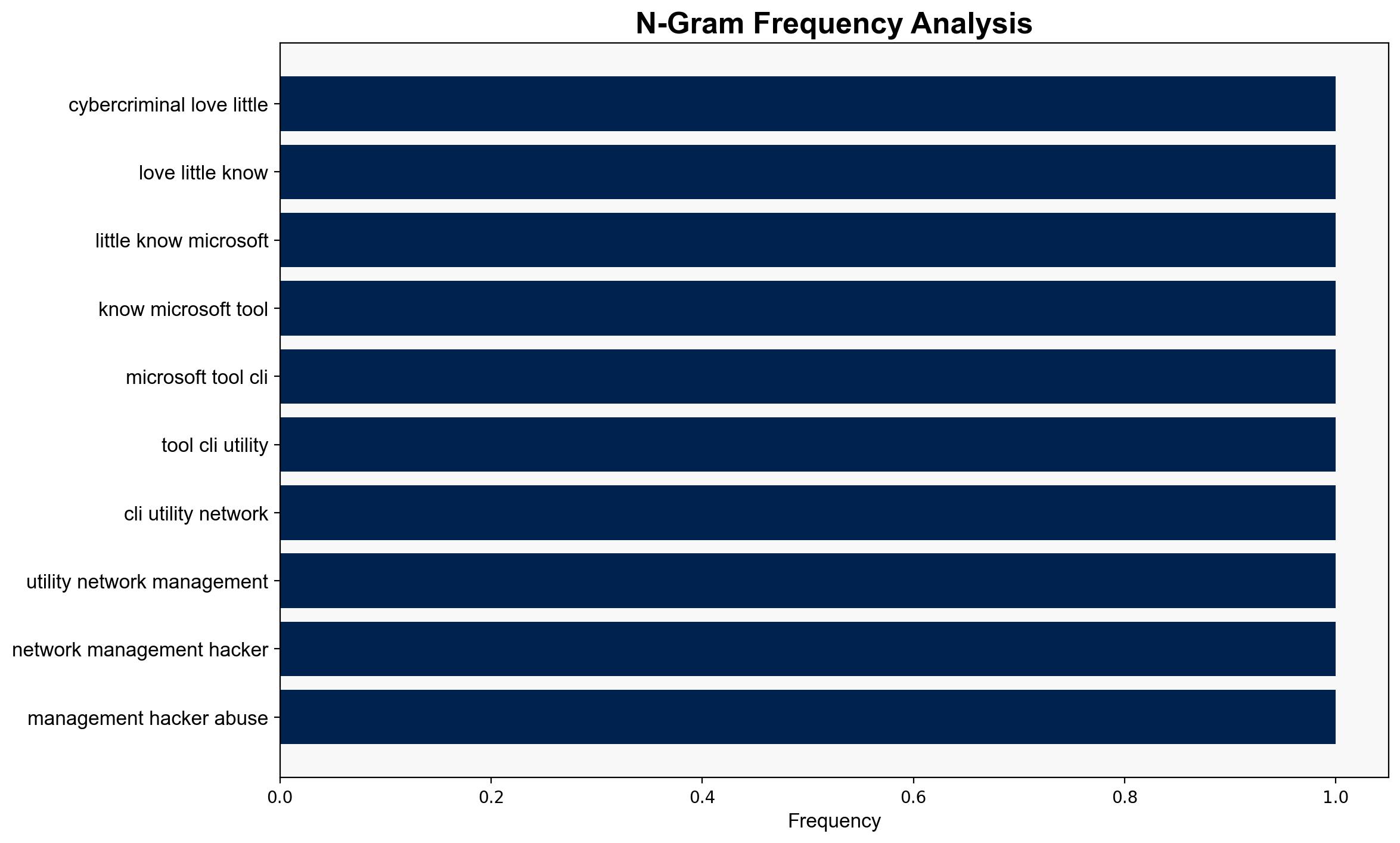Cybercriminals love this little-known Microsoft tool a lot – but not as much as this CLI utility for network management – TechRadar
Published on: 2025-06-07
Intelligence Report: Cybercriminals love this little-known Microsoft tool a lot – but not as much as this CLI utility for network management – TechRadar
1. BLUF (Bottom Line Up Front)
Cybercriminals are increasingly exploiting native Microsoft tools, particularly the command-line utility netsh.exe, for network management and system breaches. This trend highlights the need for enhanced detection and monitoring strategies, as traditional defenses may be inadequate. Recommendations include deploying advanced endpoint protection solutions and adopting proactive hardening measures.
2. Detailed Analysis
The following structured analytic techniques have been applied to ensure methodological consistency:
Adversarial Threat Simulation
Simulations indicate that cyber adversaries leverage netsh.exe and other native tools like powershell.exe and wscript.exe to bypass conventional security measures.
Indicators Development
Behavioral anomalies associated with these tools include unexpected network configuration changes and unauthorized script executions.
Bayesian Scenario Modeling
Probabilistic models suggest a high likelihood of continued exploitation of these tools, necessitating robust monitoring protocols.
Network Influence Mapping
Mapping reveals a network of cyber actors exploiting these utilities, indicating a coordinated effort to exploit system vulnerabilities.
Narrative Pattern Analysis
Analysis of cybercriminal narratives shows a strategic shift towards leveraging trusted system binaries to evade detection.
3. Implications and Strategic Risks
The exploitation of native Microsoft tools poses significant risks to organizational cybersecurity. This trend undermines the effectiveness of traditional antivirus solutions, potentially leading to widespread breaches. The dual-use nature of these tools complicates detection, increasing the risk of undetected intrusions and data exfiltration.
4. Recommendations and Outlook
- Implement advanced endpoint protection solutions that can differentiate between legitimate and malicious use of native tools.
- Adopt proactive hardening measures, such as Bitdefender’s PHASR, to reduce the attack surface.
- Scenario-based projections suggest that without intervention, the frequency and severity of these attacks will increase. Best case: Enhanced detection and response capabilities mitigate risks. Worst case: Failure to adapt leads to significant data breaches. Most likely: Incremental improvements in security posture reduce but do not eliminate risks.
5. Key Individuals and Entities
Efosa Udinmwen
6. Thematic Tags
national security threats, cybersecurity, counter-terrorism, regional focus





